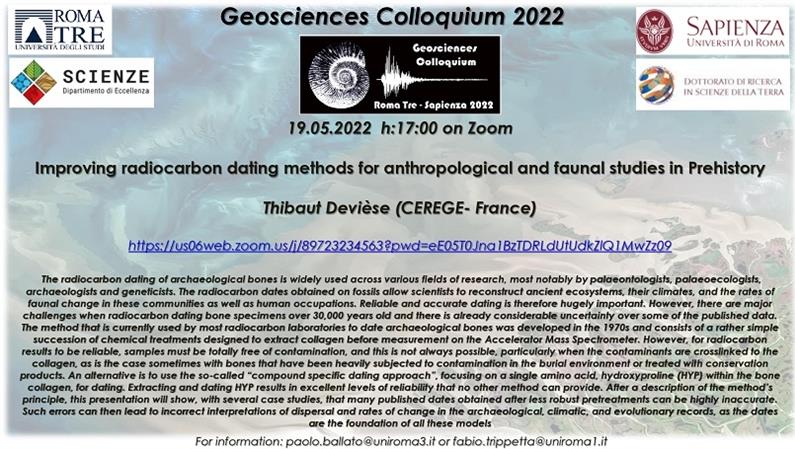Thursday (May 19th) at 17:00 on Link identifier #identifier__85814-1ZoomLink identifier #identifier__1335-2.
The speaker will be Thibaut Devièse (CEREGE- France) and the talk will be titled
Improving radiocarbon dating methods for anthropological and faunal studies in Prehistory
Abstract
The radiocarbon dating of archaeological bones is widely used across various fields of research, most notably by palaeontologists, palaeoecologists, archaeologists and geneticists. The radiocarbon dates obtained on fossils allow scientists to reconstruct ancient ecosystems, their climates, and the rates of faunal change in these communities as well as human occupations. Reliable and accurate dating is therefore hugely important. However, there are major challenges when radiocarbon dating bone specimens over 30,000 years old and there is already considerable uncertainty over some of the published data.
The method that is currently used by most radiocarbon laboratories to date archaeological bones was developed in the 1970s and consists of a rather simple succession of chemical treatments designed to extract collagen before measurement on the Accelerator Mass Spectrometer. However, for radiocarbon results to be reliable, samples must be totally free of contamination, and this is not always possible, particularly when the contaminants are crosslinked to the collagen, as is the case sometimes with bones that have been heavily subjected to contamination in the burial environment or treated with conservation products. An alternative is to use the so-called “compound specific dating approach”, focusing on a single amino acid, hydroxyproline (HYP) within the bone collagen, for dating. Extracting and dating HYP results in excellent levels of reliability that no other method can provide. After a description of the method’s principle, this presentation will show, with several case studies, that many published dates obtained after less robust pretreatments can be highly inaccurate. Such errors can then lead to incorrect interpretations of dispersal and rates of change in the archaeological, climatic, and evolutionary records, as the dates are the foundation of all these models.
Info: paolo.ballato@uniroma3.it e fabio.trippetta@uniroma1.it
Link identifier #identifier__29234-3Locandina
Seminar: Improving radiocarbon dating methods for anthropological and faunal studies in Prehistory - Dipartimento di Economia
 Dipartimento di Economia
Dipartimento di EconomiaDipartimento di Economia dell'Università degli Studi Roma Tre
Department of Economics

Dipartimento di Economia dell'Università degli Studi Roma Tre
